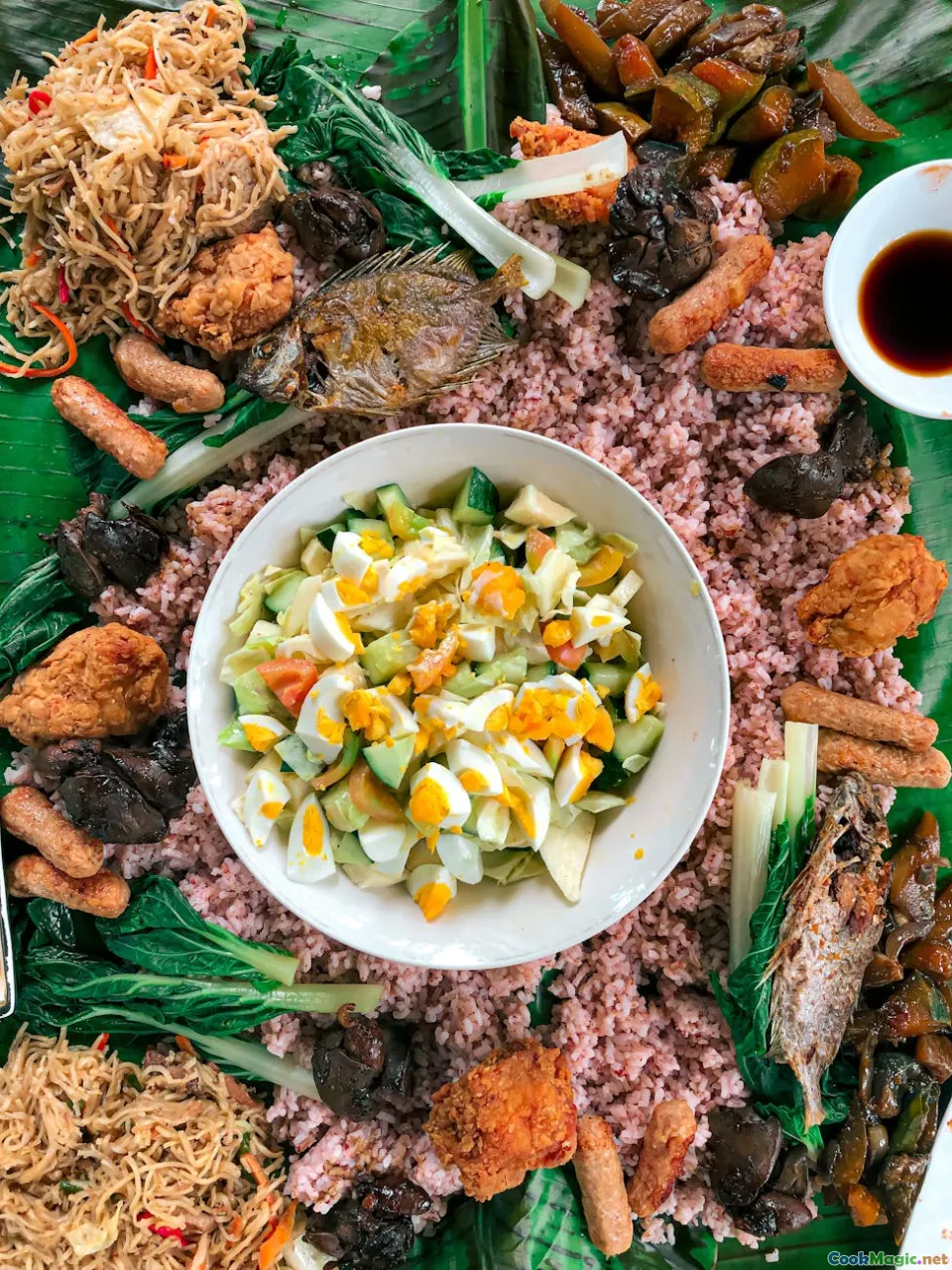Celebrating Filipino Festivals Through Traditional Food
7 min read Discover how vibrant Filipino festivals are enriched by traditional dishes that embody history, culture, and community spirit in every bite. April 19, 2025 04:55
Celebrating Filipino Festivals Through Traditional Food
Imagine a tapestry woven with colors, sounds, and scents—each thread representing a story, a tradition, a community. Now, picture that tapestry illuminated by the warmth of shared meals, where every dish holds a secret history and a promise of unity. This is the essence of Filipino festivals: a jubilant convergence of culture, faith, and—most delectably—food.
The Heartbeat of Filipino Celebrations
Filipino festivals, or fiestas, are not just events marked on the calendar; they are living expressions of history, faith, and communal identity. From the grand procession of Ati-Atihan in Kalibo to the colorful Pahiyas in Lucban, each festival is a vibrant showcase of local customs, dance, music, and, notably, an array of traditional dishes that serve as edible emblems of cultural pride.
Food in Filipino festivals is more than sustenance; it is a narrative in itself—a reflection of the land, the history, and the people. As you partake in these festivities, you indulge not just your palate but your senses and your soul.
The Cultural Significance of Food in Festivals
A Heritage Preserved in Every Bite
Traditional Filipino dishes prepared during festivals often carry centuries-old recipes passed down through generations. These recipes, infused with local ingredients and cooking techniques, become edible artifacts that preserve regional identities.
Symbols of Prosperity and Gratitude
Many festival foods symbolize abundance and gratitude. For example, the lechon (roast pig) served during festivities is a centerpiece representing prosperity, while the kakanin (rice cakes) like bibingka and sapin-sapin symbolize rice’s sacredness and the community’s harvest.
A Social Glue
Sharing food during festivals fosters camaraderie and social bonding. It’s common for families, neighbors, and even strangers to gather around large tables laden with traditional dishes, reinforcing communal ties.
Iconic Filipino Festival Foods
Lechon: The Crown Jewel
No Filipino fiesta is complete without the lechon. The crispy skin, succulent meat, and aromatic herbs make it a festival highlight. Roasted over charcoal, the lechon emanates an irresistible aroma that draws crowds and signals celebration.
Pansit: A Noodle for Long Life
Pansit, or stir-fried noodles, symbolizes longevity. During festivals like the Panagbenga Flower Festival in Baguio or the Sinulog in Cebu, colorful pansit dishes are served, embodying hope for a prosperous future.
Kakanin: Sweet Rice Delights
From bibingka (baked rice cake) to sapin-sapin (layered sticky rice dessert), these sweet treats are staples in festivals. Their vibrant colors and fragrant coconut flavor evoke memories of harvests and community warmth.
Halo-Halo: A Refreshing Celebration
While often associated with the hot climate, halo-halo also plays a festive role, especially during summer festivals. This icy concoction of crushed ice, sweet beans, fruits, and evaporated milk refreshes and delights festival-goers.
Bibingka and Puto Bumbong: Christmas and Beyond
During Simbang Gabi (night Masses), these rice cakes symbolize hope and gratitude. Their smoky aroma and soft texture make them festival favorites, enjoyed with butter, sugar, or grated coconut.
Personal Reflections and Anecdotes
Growing up in the Philippines, I vividly remember the aroma of lechon filling our neighborhood during the Ati-Atihan festival. The laughter of children, the sight of colorful costumes, and the taste of hot kakanin from street vendors created a sensory symphony that defined my childhood.
One festival that remains close to my heart is the Pahiyas Festival in Lucban. The streets are decorated with vibrant kiping rice wafers and harvest produce, and the aroma of lechon mingles with the sweet scent of suman (sticky rice wrapped in banana leaves). Participating in the communal cooking and sharing of traditional dishes deepened my appreciation for Filipino culture’s resilience and warmth.
The Role of Food in Modern Festival Celebrations
Today, Filipino festivals continue to evolve, blending tradition with innovation. Yet, the heart remains the same: food as a vessel of cultural identity and community bonding.
Chefs and home cooks alike are reinventing classic dishes, using local ingredients or modern techniques to keep traditions alive. Social media platforms showcase vibrant festival foods, inviting a global audience to partake in this culinary celebration.
How to Celebrate Filipino Festivals Through Food at Home
While traveling to the Philippines offers an authentic experience, you can bring the vibrancy of Filipino festivals into your own home:
- Host a Fiesta: Prepare a spread of lechon, pansit, kakanin, and halo-halo.
- Learn Traditional Recipes: Dive into cooking bibingka or sapin-sapin from scratch.
- Decorate with Filipino Motifs: Use colorful banderitas (bunting) and native crafts to create a festive atmosphere.
- Share with Community: Invite friends and family to celebrate and share stories related to Filipino festivals.
Final Thoughts
Filipino festivals are more than celebrations; they are living expressions of history, faith, and community spirit, vividly painted through traditional foods. Each dish tells a story—of resilience, gratitude, and joy—that transcends borders and generations.
By embracing and sharing these culinary traditions, we keep alive the rich cultural tapestry of the Philippines, ensuring that the flavors and stories continue to inspire and unite us all. So next time you savor a lechon, kakanin, or pansit, remember—you’re tasting a piece of Filipino history and the collective heart of a nation celebrating life with food.









